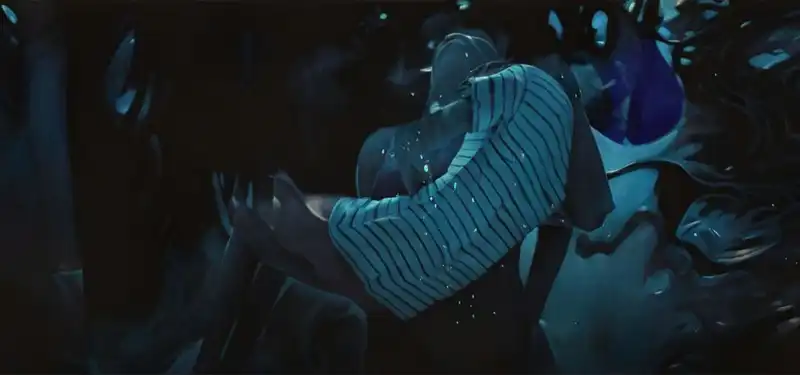Nov 29, 2024
2025 Oscar Short Film Candidates: - Wind and Shadow" Director Chris Kelly
Cartoon Brew is putting the spotlight on an animated short film nominated for an Academy Award in 2025.
Today's film is the Wind and shadow of Irish filmmaker Chris Kelly. The short story won the qualification of the Academy Award through a theatrical exhibition.
When the line between reality and memory becomes blurred, mothers face fear and uncertainty, revealing stories of resilience and love. This journey preaches her illness in this short film, created by BAFTA-nominated writer/director Chris Kelly, whose daughter is bravely inspired by real events, this film is co-produced by Belfast-based Out of Orbit and Enter Yes.
Cartoon Brew: In a previous interview, I mentioned that throughout the production process, there was a mix of unique solo sessions and a long stream of teamwork to keep costs down.
Chris Kelly: Moving between solo sessions and collaborative teamwork has always been a refreshing change for me. After a long period of solo work, I will often feel ready for collaborative work, leaning on the incredible skills, professionalism, and unique approach that others have brought to the project. These collaborations often elicited new ideas, forms, emotions and styles that could be explored further in solo sessions and refined the film in ways that felt more personal and deeply relevant to the subject. I find it incredibly fulfilling to move between these two modes of work. What matters to me is that the communal nature of filmmaking is evident on screen. I am always vocal about promoting and celebrating the contributions of everyone involved.
What was it about this story or concept that forced me to connect with you and direct the film -
the subject matter was incredibly deep to me and I wanted to share that sense of inspiration - a kind of strength that is often overlooked but deserves to be emphasized. It felt like a story that resonated with people and gave us a glimpse of the beauty of human perseverance and the support we give to each other in difficult times.
What did you learn through the experience of making this film, production-wise, filmmaking-wise, creative, or about the subject-
As a filmmaker, I have always learned that this project is more agnostic in my approach to the medium, focusing on finding the right way to convey ideas, rather than sticking to the conventional definitions of animation and live-action. Greatly admired the filmmakers who move seamlessly between these mediums or blend them to create something entirely new, this film pushed me to think about how I could confidently do the same in my work.
The profound nature of the subject, coupled with constrained budget and production challenges, forced me to truly consider what I wanted to explore as a creative. Instead of being limited by traditional rules and industry expectations, they taught me the importance of trusting my instincts and being confident in my creative language and using animation as a tool to enhance storytelling. This experience eventually made me clearer about my voice as a filmmaker and reinforced my belief that the medium should always serve the narrative, and not vice versa.
Can you explain how you developed a visual approach to cinema, why you settled on this style/technique, and how this shaped your final work?-
My visual style has long explored the balance between tangible real-world techniques - layered images with textures - and the use of computer technology to produce films within budget constraints. Striking this balance was a long journey driven by the emotional tone of each project and the need to adapt the approach to fit the subject matter.
The key focus of my style is the human face, especially the facial expressions and the details around the eyes. I would like to note that in the peripheral areas of the frame (where it is less likely to attract the viewer's attention), we can use more automated or cg techniques without losing emotional impact, but for key features like faces and movements that need to be deeply registered, I spend time making these elements by hand. This interaction between automation and manual work allows the image to feel alive in a unique way.
My process involves reviewing the film, letting it settle, and revisiting an area where there are no organic, realistic moments. I return to these areas with looser, more expressive and more painterly techniques. This approach invites the audience to bring their own interpretation to the work, by avoiding overly rigid or concrete forms and forms tied to my belief that animation can provide a kind of honesty and openness, especially when telling stories about real subjects. The balance of this technique amplifies the feelings of the piece and allows me to create something that feels both authentic and achievable in the reality of production constraints.
.



Post your comment